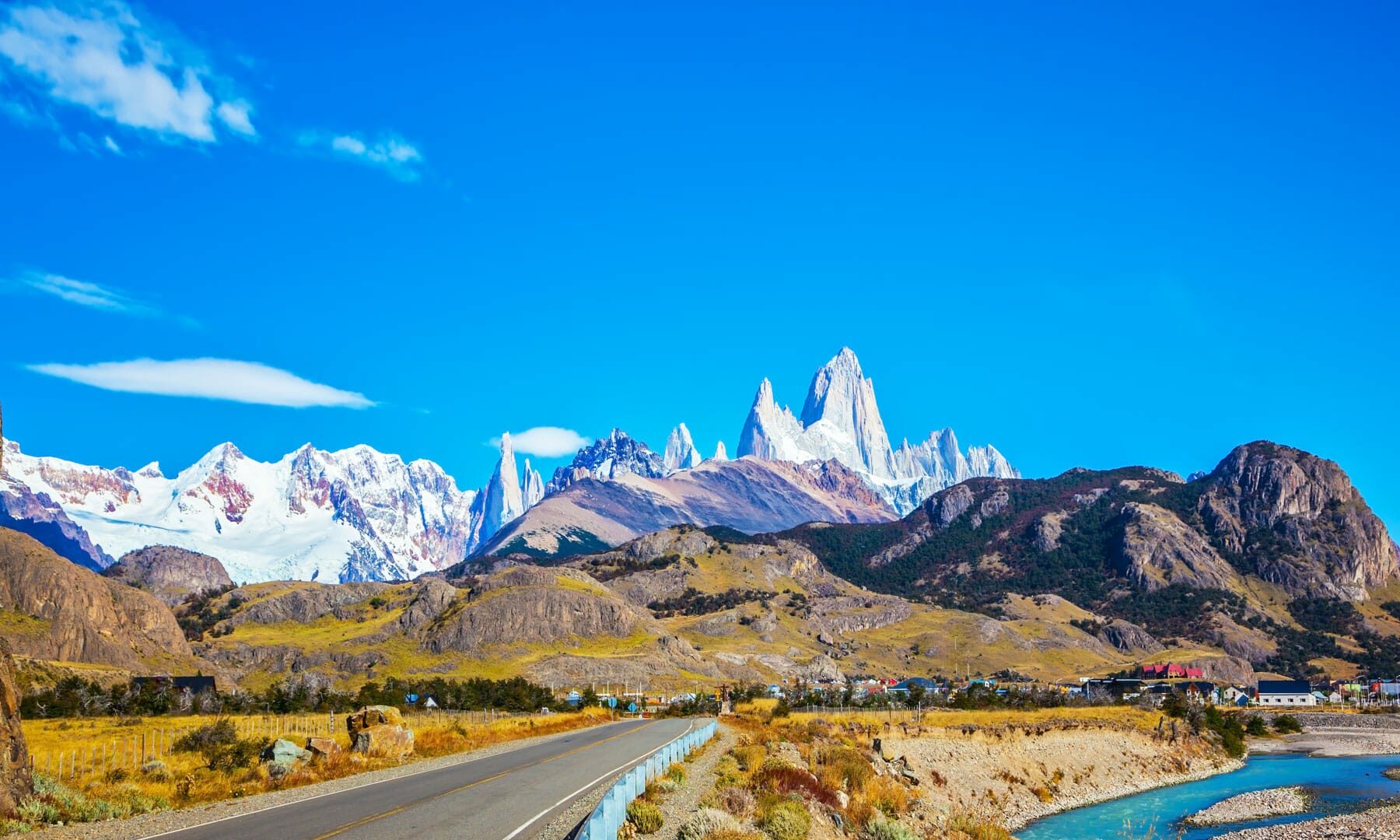Stretching from a tropical north strewn with wetlands framed by thundering waterfalls to ice-cold southern shores that are one rough crossing away from Antarctica, the sheer size, scale, and diversity of Argentina is hard to comprehend until you’ve traveled here. With huge distances to cover between north and south, you’ll want to make sure you’ve planned well in advance or have plenty of time to see all of the top Argentina attractions.
In Buenos Aires, the cultured capital, you can embrace the football culture, visit elaborate cemeteries, and see famous sights like the Casa Rosada (the Presidential Palace). In Las Pampas, you can learn how to live like a gaucho, as you ride horses and cook asado. On the Brazilian border, the thundering torrents and precipitous drops of Iguazu Falls are a must-see, while the salt flats and arid desert of Salta are otherworldly.
There are beaches and marine reserves along Argentina’s long, long coastline, while in Patagonia, endless steppe turns into ice-clad mountains, where you can hike to alpine lakes and trek over glaciers. Then, in the far southern reaches of Argentina, you can literally visit the “End of the World,” as you explore the icy realms of Ushuaia, the most southerly city on earth.
With so many things to see and do, you might not know where to begin. That’s why we’ve compiled our list of the absolute best things to do in Argentina for you. Stick to these fun and unique Argentina bucket list recommendations, and there’s no doubt you’ll have an exceptional time exploring this beautiful South American country.
Disclaimer: This post may contain affiliate links. If you make a purchase or booking through one of our links we may earn a small commission (don’t worry, it’s at no extra cost to you).
The 25 Best Things to do in Argentina
1. Dance the Tango in Buenos Aires

Have you always wanted to dance the night away after a few too many glasses of Malbec? Then you’re in the right place because dancing the tango is one of the best things to do in Argentina. This passionate dance evolved in the working-class suburbs of Buenos Aires in the 19th century, and it’s since become one of the nation’s most important cultural icons.
Although critics and historians debate how, where, and why the dance originated, there’s no doubt that there’s a colorful blend of influences. It’s a dance that’s shared over the Rio Plata with neighboring Uruguay and a dance that’s sure to set your feet, and soul, on fire.

In Buenos Aires, we recommend visiting La Boca, one of the districts where the dance is thought to have originated. La Boca was the traditional home of many working-class immigrant families from Europe, and they took to the dance as a means of expression and entertainment.
On La Caminito, a colorful street in the center of La Boca, there are open-air performances every day. You can learn more about the dance itself, and its mysterious origins, with a trip to the World Tango Museum (also in Buenos Aires), you can catch a professional performance in one of the Argentine capital’s many theaters, or you could learn the rhythm and moves from a professional tango instructor.
2. Visit the Museums and Art Galleries of Buenos Aires

Buenos Aires is one of the most cultured cities in the Americas, and you’ll be hard-pressed to decide which of the capital’s many museums and galleries to visit when you’ve only got limited time here.
From fine art galleries to football museums, there’s a lot going on in Buenos Aires. Start with a tour of the Casa Rosada Museum, a small but fascinating museum that sits on the site of the original Spanish colonial fort in Buenos Aires. The museum is behind the Presidential Palace in Plaza de Mayo, where you can tick off many other important sights too.

A tour of the Teatro Colón, one of the world’s most beautiful opera houses, is one of the must-do things in Argentina, while football fans can take their pick of the Boca Juniors Museums or the River Plate Museum.
Buenos Aires is renowned for its art galleries, too, and at the Museo Nacional de Bellas Artes, you’ll find iconic works by legendary painters like Goya, Rembrandt, Rubens, and Monet. The Latin American Art Museum of Buenos Aires (MALBA) is devoted to collecting the best art from Latin America, and the Buenos Aires Museum of Modern Art (MAMBA) is devoted to all things contemporary.
3. Take a Guided Tour of Recoleta Cemetery in Buenos Aires

If you’re fascinated by the lives (and deaths) of Argentina’s most famous historical figures, then you’ll love joining a guided tour of the Recoleta Cemetery. That might sound a bit morbid, but Argentinians prefer to celebrate life rather than mourn death, and so the Recoleta Cemetery is a lavish tribute to those laid to rest here.
This is one of the most beautiful cemeteries in the world, and being located next to Recoleta – the wealthiest district in Buenos Aires – it’s home to incredible marble mausoleums and art deco graves that don’t attempt to hide the wealth of the deceased. The cemetery itself dates back to the late 18th century (although it’s been remodeled and replanned several times since) and now has almost 5,000 vaults, memorials, and burial chambers within its walls.


To really bring Recoleta Cemetery to life, though, you’ll want to join a guided tour. Among the marble and flowers, you’ll learn all about the Argentinian presidents, writers, artists, film stars, priests, and philanthropists who were buried here. Perhaps the most iconic grave to find is that of Eva “Evita” Peron, a world-famous actress and politician who was Argentina’s First Lady in the 1940s and 1950s.
4. Read in a Beautiful Buenos Aires Bookstore

Buenos Aires can be a culture overload, which is one of the many things we love about the Argentine capital. If you’re a book lover, then you’re in the right place because Buenos Aires is home to some of the most beautiful bookstores and libraries in the world.
The most famous bookstore in the capital is El Ateneo Grand Splendid, which you’ll find in Barrio Norte. Originally opened as a theater in 1919, the stalls and verandas are now packed to the rafters with bookshelves.


The Biblioteca Nacional de Maestras y Maestros is a magnificent example of 19th-century architecture, with a grand interior where you’ll enjoy paging through old dusty tomes. The Biblioteca del Congreso de la Nación is the nation’s foremost public library, with vaults packed full of historic manuscripts, while on the other scale, Libros del Pasaje is a cozy bookstore that doubles up as a coffee shop.
5. Stare in Awe at the Power of Iguazu Falls

Iguazu Falls is, without a doubt, one of the top Argentina attractions. This epic waterfall is a sight to behold, and it’s so large in scale that it forms a natural border between Argentina and Brazil.
To get here, you’ll need to travel to the far northern city of Puerto Iguazu, which forms a fascinating geographical tripoint with Brazil and Paraguay. It’s a two-hour plane ride or a long, long bus ride from Buenos Aires, or you can incorporate the waterfall into a wider northern Argentina itinerary.


Basing yourself in Puerto Iguazu, you can start by exploring the Argentinian side of the waterfall. From the city, hop on the Rainforest Ecological Train, a quirky jungle train that takes you through the rainforest to viewpoints overlooking the waterfall. Here you’ll be awed by the sheer power of this natural sight when you are at “Devil’s Throat,” the most powerful part of Iguazu Falls.
You’ll be amazed not only by the thundering water but by the number of different drops that form Iguazu Falls. This isn’t a single waterfall, but Iguazu Falls comprises some 3.2 kilometers (2 miles) of waterfalls spread across an upper and a lower section, with the tallest point being around 82 meters (269 feet) high.
There are all sorts of hiking trails, rainforest excursions, and boat rides that can bring you closer to the foaming white water, or you can simply enjoy the view from a distance. After completing the Argentinian side, you can then take a day tour of the Brazilian side or check out Paraguay for the day!
6. Cross the Salty Deserts of the Salinas Grandes

It’s difficult to appreciate the size of Argentina until you start to experience the varied climates found across the country. The northeast is largely tropical, the south is home to frozen glaciers, and the northwest is where you’ll find a dry, arid climate that creates the perfect conditions for salt flats.
Located at a high altitude of around 3,500 meters (11,483 feet), the Salinas Grandes is an unusual desert ecosystem that covers some 212 square kilometers (82 square miles) of arid land that’s rich in sodium and potassium.
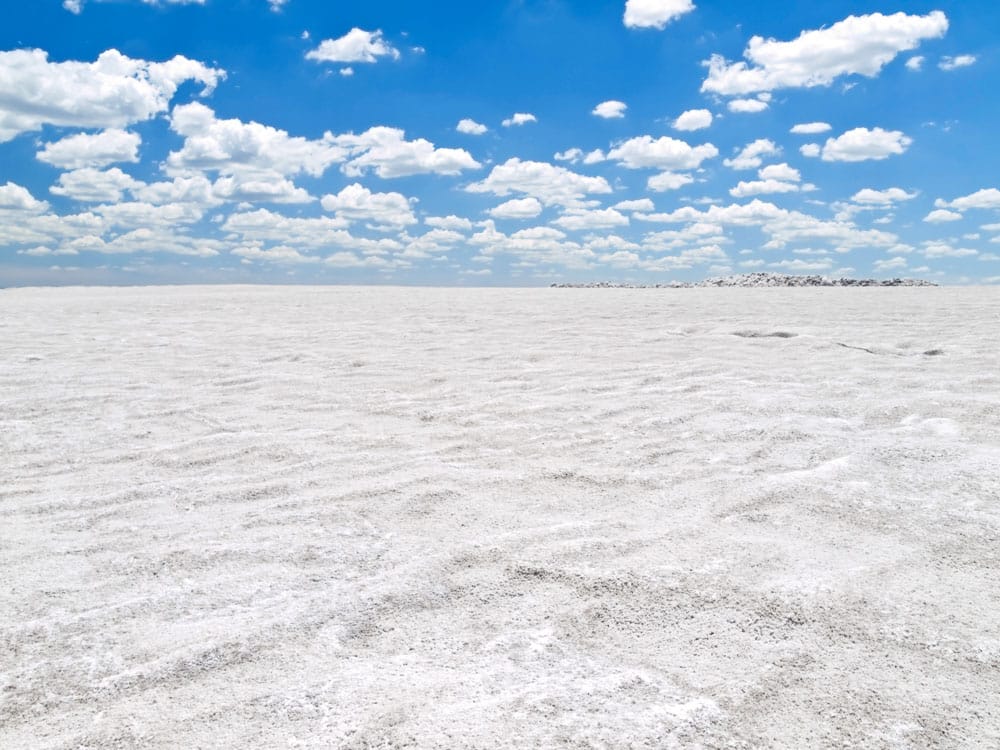
Cross these vast salt flats, and you’ll be humbled by the emptiness of the landscapes. Look a little closer, though, and you’ll also see how hardy humans have shaped the desert for centuries in an effort to harvest the rich resources.
These are the third-largest salt flats in the world, but they’re surprisingly little-known compared to the more popular ones in Bolivia and Chile. Interestingly, the region also shares cross-border ties with both these countries through its Inca culture and heritage.
You can learn more at the Museum of High Altitude Archaeology in Salta, which is the starting point for most journeys into the surrounding salt flats. You can also visit the Quebrada de Humahuaca on your way to Salinas Grandes, where you’ll find gloriously colorful mountains framed against the salt flats.
7. Enjoy the Swiss Vibes in San Carlos de Bariloche

You can escape the bustle of large cities like Buenos Aires or Mendoza with a relaxing getaway in San Carlos de Bariloche, which tourists typically compare to the Swiss Alps.
That comparison has something to do with the pretty Swiss-style architecture that’s common throughout the small city, which sits on the banks of Nahuel Huapi, a beautiful glacial lake that’s guaranteed to take your breath away.
The lake, and the surrounding mountains of the Andes that slope toward the Chilean border, form the backdrop for your stay in San Carlos de Bariloche, where you can embrace the Argentine take on alpine life.

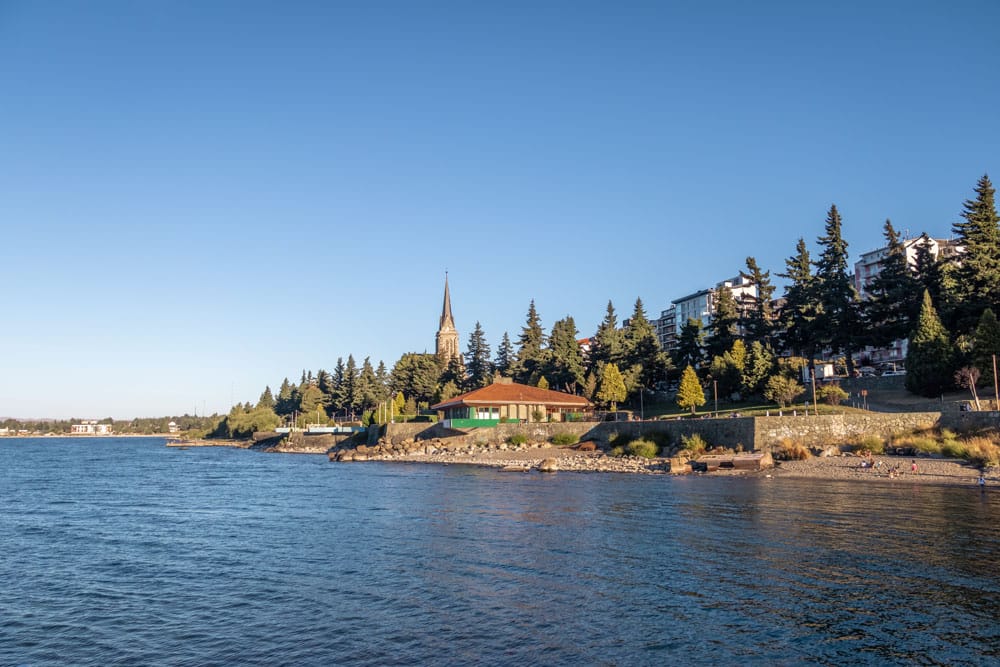
Local Mapuche people have lived in the area for millennia, and European settlers only began arriving here in large numbers in the 1840s, when German-speaking migrants established the basis of the city you see today.
San Carlos de Bariloche drew on this European legacy in the 20th century when the city devoted itself to tourism, and as well as the Swiss architecture, you’ll also love the chocolate-making and beer-brewing skills of the locals.
In winter, San Carlos de Bariloche is Argentina’s foremost ski resort, and in summer, the city is the perfect base for exploring the hiking trails, lakes, and mountain peaks within Nahuel Huapi National Park.
8. Join an Indigenous Walking Tour in San Carlos de Bariloche

Given how European Argentina feels, it can be easy to forget that the country has a long indigenous history that predates the arrival of the Spanish by thousands of years. Indigenous history still lies under the surface, and each region has its own distinct group that you can learn more about.
In San Carlos de Bariloche, you can learn more about the Mapuche, a people who populated large areas of Patagonia that are now in Chile and Argentina. This free walking tour offers a unique insight into their struggles against colonialism and the difficulties and discrimination they still endure to this day.
9. Feast on Asado

For the foodies out there, experiencing asado is one of the most unique things to do in Argentina. Asados are a huge part of Argentinian culture, but only if you’re big into red meat and wine.
An asado is a big outdoor grill or barbecue, where huge chunks of meat, enormous sausages, and entire racks of ribs are cooked to grizzly perfection over outdoor fire pits and hot coals. The tradition evolved with the gauchos, who kept vast herds of free-roaming cattle that provided a steady source of red meat that was ideal for grilling. Now, an asado evolved beyond the food and is as much a social event as it is a chance to eat.


The meat itself is prepared by an asador, who will use a parrilla, or metal grate or grill, to slow cook the meat. Typical asados often include pork, beef, and morcilla, a type of blood sausage. The meat is served straight from the grill, accompanied by typical barbecue sides and copious quantities of red wine to wash it all down with.
10. Step Back Time at Cueva de las Manos

A visit to Cueva de las Manos is one of the top things to do in Argentina. Hidden among the remote valleys and steep canyons of northern Santa Cruz province, this is one of the world’s foremost archaeological sites.
Cueva de las Manos means “Cave of the Hands” in English, and when you first set eyes upon the vividly colored handprints that adorn the rocks, you’ll understand why there’s no better name for this historic attraction. Painted in a tapestry of reds, yellows, browns, and blacks, hundreds of hands were stenciled onto the cave walls over hundreds of years.

The hands were all produced in negative and often accompanied by more detailed cave paintings that depicted scenes of hunting and daily life in Patagonia, as drawn by the region’s earliest human inhabitants. The oldest painted hands have been carbon-dated back to 7300 BC, and it’s thought that successive generations of hunter-gatherers returned to the same cave every season until at least 700 AD.
You can take a guided tour of Cueva de las Manos, which is a short car drive away from the town of Perito Moreno (not to be confused with the town of the same name further south!). The cave is protected as part of Parque Patagonia, a rewilding reserve where you can hike and camp among guanacos and pumas while exploring the arid steppe of northern Patagonia.
11. Track Pumas in Northern Santa Cruz Province

Among the canyon and steppe of northern Patagonia, the puma has been hunted almost to extinction. Decades of intensive cattle farming depleted food chains, while ranchers would hunt big animals like the puma, which they saw as a threat to their livestock.
But in Parque Patagonia, the same nature preserve where you can visit Cueva de las Manos, the puma has been brought back from the brink of extinction. This large mountain lion is now protected in several rewilding areas. And, if you’re looking for unique Argentina activities, you can join a puma tracking tour to uncover their elusive hideouts.

In fact, this is the only place in Argentina where it’s possible to join an official puma tracking tour. While puma tracking tours are common over the border in Chile, Argentinians have historically been further behind their neighbor in terms of protecting their wildlife. The guides themselves used to work on ranches where many were paid to hunt the pumas, so new tourism initiatives are making use of their exceptional tracking skills for an eco-conscious purpose.
You’ll be led across the steppe by your puma tracker as they follow tracks through ravines and gorges and across wide-open landscapes. It’s one of the most unique things to do in Argentina, and you can find out more by contacting La Posta de los Toldos, a former ranch turned ecotourism center in Parque Patagonia that’s at the center of rewilding efforts within the park.
12. Savor Dulce de Leche

Savoring the sweet delights of dulce de leche is an Argentinian pastime like no other. This deliciously sweet treat is a local staple, and you’ll fall in love with it the moment you enjoy your first spoonful.
Dulce de leche is best described as a type of caramel. It’s prepared using milk and sugar in its most basic form, with local legends attributing its creation to the accidental burning of milk in a saucepan many centuries ago.

The true origins of dulce de leche are unlikely to ever be known, though. While it’s an Argentinian staple that’s spread on toast and used to flavor ice cream, the same goes in Uruguay, Paraguay, Chile, and many more South American countries where it’s also popular.
In Argentina, though, the art of preparing dulce de leche is being mastered to extremes, and we’re certain that enjoying this sweet caramel treat will quickly become one of your favorite Argentina activities!
13. Brave Aconcagua, South America’s Highest Mountain Peak

Rising to a staggering height of 6,961 meters (22,838 feet) above sea level, Aconcagua is Argentina’s highest mountain peak and one of the top Argentina attractions.
In fact, it’s much more than this because Aconcagua is also the highest peak outside of Asia, the highest peak in South America, and the highest peak to be found anywhere in the Americas. It’s also part of the Seven Summits Challenge, whereby climbers attempt to scale the highest peak on every continent.
Despite these lofty facts, Aconcagua is also considered to be one of the “easiest” high peaks to climb, and countless mountaineers summit it safely every season. The reason for this is down to the relatively “easy” route to the summit, which doesn’t involve any serious technical climbing.


However, don’t take an expedition to the top of Aconcagua lightly because the extreme altitude combined with fatigue is incredibly dangerous, and several climbers still die each year attempting the summit.
If you’re in good shape, have experience with altitude, and join an organized trip led by a local guide, then Aconcagua is an excellent challenge to attempt during your stay in Argentina.
The mountain is also part of the wider Aconcagua Provincial Park in Mendoza Province, where there are endless opportunities for hiking and outdoor adventures for those who would rather admire the mountain from a safer distance and lower altitude.
14. See the Marine Life of the Valdes Peninsula

A visit to the Valdes Peninsula is one of the must-do things in Argentina for wildlife lovers. Located on the northern coast of Chubut Province, this UNESCO World Heritage Site offers a unique opportunity to spot everything from sea lions to guanacos.
This is Patagonia, although it’s unlike anywhere else in the region. The peninsula itself is virtually barren, with several large salt flats and lakes covering the interior. The coast, though, is teeming with life.


Between April and November, you’ll see several species of whale migrating past the peninsula or stopping off in the sheltered bays to feed in summer. Baleen whales are common, while the area is an important breeding ground for southern right whales.
Orcas are regularly spotted hunting sea lions along the shore, while large colonies of elephant seals, fur seals, and penguins are common to find. You can explore the peninsula by joining boat tours or kayaking trips, with Puerto Madryn being the main gateway to the nature reserve.
15. Explore the Swamps of the Ibera Wetlands

In the tropical north, the Ibera Wetlands are a long stretch of the imagination away from any idea of Argentina you might have in your head. A tropical climate, combined with a vast number of swamps, lakes, marshes, and lagoons, makes the Ibera Wetlands one of the most unique habitats in the country.
This is the antithesis of Patagonia’s snowcapped mountains, and you’ll love exploring what is the second-largest wetland system in the world (the only one larger is found in Brazil). With 5,000 square miles to explore, this is also the largest provincial park in Argentina.


There are an estimated 4,000 unique species of flora and fauna within the nature reserve, and many of these are endangered. Some species went extinct, but a concerted reintroduction program by Rewilding Argentina means that many species, including the jaguar and giant anteater, are being returned to their natural habitats.
The Ibera Wetlands are best explored with an indigenous guide, so you can begin to understand the intricate relationships that have existed here between man and nature for centuries. Being a wetland, you’ll need to get around by boat, kayak, or canoe, which makes it all the more fun.
16. Hit the Beaches of Mar del Plata

This isn’t a country that’s known for its beaches, but head to Mar del Plata, and you’ll find some of the best sandy stretches of coastline in South America. A four-hour drive south of Buenos Aires, in summer, Mar del Plata is packed with local tourists searching for sun, sea, and sand!
The city itself sprawls along the golden coastline overlooking the Atlantic Ocean. The seafront might be dated (its heyday was the 1920s), but the sand is soft and the drinks are plentiful. Playa Grande is the foremost beach in the city, but be warned, it’s packed on a hot summer’s day. Playa Grande can see some big swells, too, making it a favorite beach for surfers.

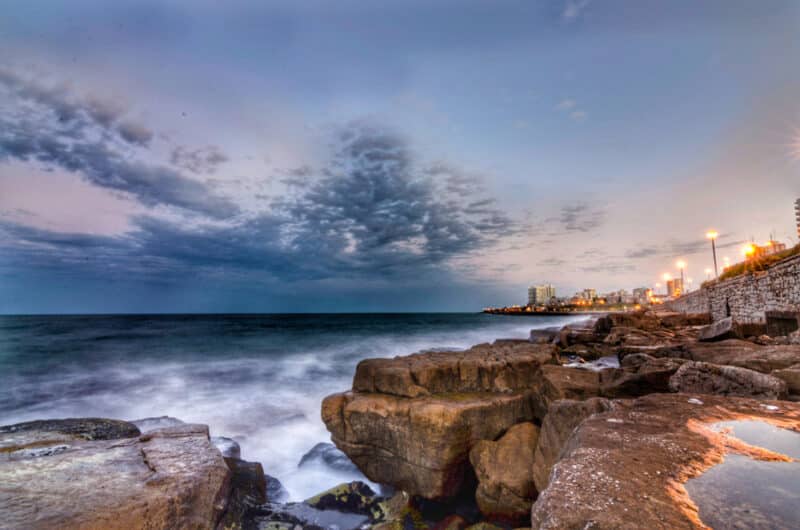
Nearby, Playa Varese is quieter, while the beaches in front of the Bristol Casino can often feel more like Monte Carlo than Argentina. Travel further south from Mar del Plata, and you’ll also find beautiful, sandy beaches at Miramar and Mar del Sur, among many others.
17. Watch A Football Game in Buenos Aires

Football is the biggest sport in Argentina by a mile, and you’ll have been hard-pressed not to notice that the Argentine national team won the football World Cup in 2022.
Football is a religion here, and fans literally live and die by their favorite teams. If you’re a sports fan, then there’s no other option because watching a football game is one of the best things to do in Argentina!

Buenos Aires, the capital, is easily the best place to watch a game in Argentina. The city is home to the best Argentinian teams in the league, and the huge stadiums sell out every weekend. Boca Juniors, founded by Italian immigrants in La Boca, is one of the world’s most famous teams. This is the team Diego Maradona played for, and Boca Juniors have the biggest fan base in the country.
River Plate are Boca Juniors’ traditional rival, and a game between these two is a die-hard occasion for everyone, even the fans. Other teams you might catch in action include Independiente, Racing Club, and San Lorenzo de Almagro, who all make up the “Big Five” in Argentinian soccer.
18. Ice Trek on the Perito Moreno Glacier

One of the most famous Argentina attractions is the Perito Moreno Glacier, which you’ll find in the far south of Santa Cruz Province.
This vast wall of ice and snow is Patagonia at its biggest and best. The Perito Moreno Glacier is almost 32 kilometers (20 miles) long and at least 4.8 kilometers (3 miles) at its widest extent. The ice is fed by the glacial waters that leak down from the Andes mountains bordering Chile, and the glacier sits precariously on the edge of a large glacial lake.

With the town of El Calafate as your base (you can fly here from Buenos Aires), you’ve got several options when deciding how best to see the glacier. You can join guided boat tours and see the ice from the lake, for example, you could take a scenic helicopter tour, or you could join the popular ice trekking tours.
Led by a local guide who knows exactly where those crevasses are, you’ll strap on crampons and wrap up warm as you explore the Perito Moreno Glacier on foot.
19. Hike Los Glaciares National Park in Patagonia

Patagonia has one of the most surreal natural landscapes you could ever see, and there’s no better place to experience the snowcapped mountains and glacial scenery than in Los Glaciares National Park.
Base yourself in El Chalten, Patagonia’s trekking capital, and you’ll be well-placed for days of hiking. From El Chalten, you’ll be able to hike to glacial lakes and epic viewpoints using the well-trodden and way-marked trails, making this one of Argentina’s most accessible trekking destinations.


There are a series of one-day hikes leading from El Chalten that are designed for different levels of experience and fitness. The shortest is a 3.2-kilometer (2-mile) hike around the ranger station in Los Glaciares National Park, which provides a quick introduction to Patagonia and a stunning vista of the fabled Mount Fitzroy Peak on the skyline.
The hike to Laguna Capri is a longer 4 hours over increasingly tougher terrain, while the 6-hour and 16-kilometer (10-mile) round-trip hike to Laguna Torre, which sits at the base of Cerro Torre, is one of the best Argentina activites.
The ultimate day hike is Laguna de Los Tres, a 24-kilometer (15-mile) trek that will take around 8 hours of walking. This hike is also known as the Mount Fitz Roy Trek because, along the way, you’ll have epic views of the mountain peak.
20. Taste the Best Wine in Mendoza

Argentina is highly regarded for its wine production, so if you’re a connoisseur, you’ll want to head straight for Mendoza.
This is one of the oldest cities in Argentina, with a history dating back to 1561, when it was founded by Spanish colonists. The city itself is a lovely example of historic Spanish architecture, and there are several interesting museums to visit first, including the Museo Nacional del Vino, where you can learn more about Argentina’s history of wine production.


After delving into the history, traditions, and production methods at the museum, it’s time to taste the wine itself on a tour of Mendoza’s many wineries. As you’d imagine, they’re not in the city itself, but in the surrounding countryside, so we recommend a driver for the day or joining an organized tour so you can taste as much as you like.
There are many excellent wineries offering tours and tastings, with the most well-known grape in production being the Malbec. Some of the best wineries include El Enemigo, the Vines of Mendoza, and Catena Zapata Winery.
21. Visit Ushuaia, ‘The End of the World’
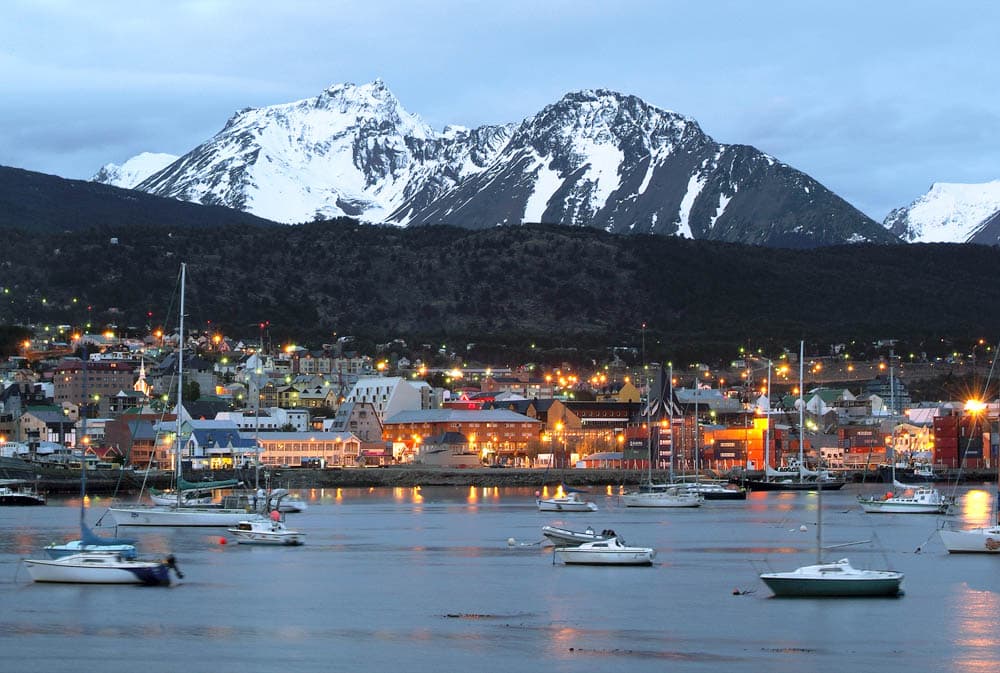
One of the best places to visit in Argentina is Ushuaia, which claims to be the southernmost city in the world (there are a few much smaller “cities” in Chile, but none are as big as this).
This is literally “The End of the World,” and Ushuaia is the perfect base from which to explore Tierra del Fuego, or in English, “The Land of Fire.” This beautiful but remote region is home to glaciers, wildlife, and wild landscapes which verge on Antarctic scenes (and indeed, this is the jumping-off point for many cruises that cross the Drake Passage to the Antarctic Peninsula).

There’s much to do in Ushuaia, including visiting the Maritime Museum and The End of the World Museum to learn more about the local history. If you’re looking for unique things to do in Argentina, you can send a postcard from “The End of the World,” too, drink a beer in one of the most southerly pubs in the world, and enjoy the curious pace of life in this remote city.
A tour of Tierra del Fuego National Park is a must on your Argentina bucket list, too, and a trip to see the penguins on Martillo Island is a trip akin to visiting Antarctica. And, of course, one of the best things to do in Argentina is the Train at the End of the World. Now a tourist train pulled by a vintage steam engine, this train line was originally built by convicts sent here in the 19th century to a place they could never escape from.
22. Cross the Beagle Channel

The city of Ushuaia overlooks the Beagle Channel, a spectacular natural waterway that carves a path between islands and nations. Named for HMS Beagle, the British ship that took Charles Darwin on his famed voyage of natural discovery around the world, the channel is one of the most scenic places in the world for a sightseeing cruise.
The Beagle Channel separates Chile from Argentina, and in the past, there have been many disputes over which country owns the many islands and islets located along this undulating coastline at the end of the world. Join a cruise from Ushuaia, and you’ll learn more about the channel’s history, which stretches back to the indigenous myths and storytelling that surround its creation.
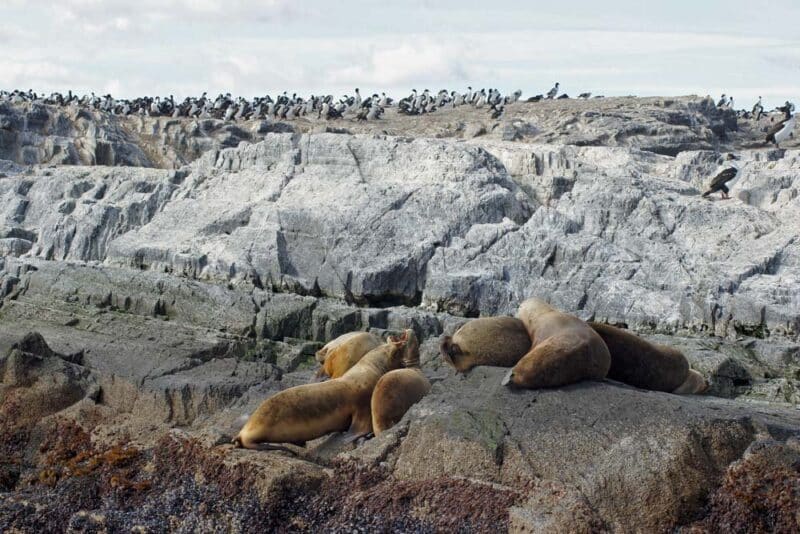

You’ll start your cruise in awe of Ushaia’s skyline as you leave the harbor, and as you make your way along the channel, you’ll spot sights like Les Eclaireurs Lighthouse, which guides ships through the dangerous passage, and Bird’s Island, a small island that’s a magnet for seabirds.
23. Explore the Patagonia Azul Biosphere Reserve

An impressive number of exciting rewilding projects are currently being undertaken across the country as locals have begun to realize the importance of protecting their incredible natural assets.
One of the newest rewilding zones has been created on the Patagonian coastline, where the Patagonia Azul Biosphere Reserve was declared in southern Chubut province. This is where Patagonia’s arid steppe meets the Atlantic Ocean, and the collision of ecosystems is one of the most magnificent Argentina attractions to behold.
The project is overseen by Rewilding Argentina, and while tourism is in its infancy here, it’s a great time to visit an unexplored part of the country. From the town of Camarones, you can join boat trips around the biosphere reserve, where you’re guaranteed to see large numbers of Magellanic penguins.
You can kayak through the unique seaweed forests that surround the islands, dive into untouched coastal ecosystems, and see larger marine life like whales that migrate along the coast.
24. Jump into Welsh Culture in Chubut Province
A recent history of European immigration means that Argentina is one of the most diverse destinations in South America. As well as the Spanish history, which stretches back to the 16th century, and the mass Italian immigration that stamped its place into local culture, there’s a lesser-known history of Welsh migration to uncover in Chubut Province.
Much of this province is known as Welsh Patagonia because, in the late 19th century, many Welsh people emigrated here to build farms and take up land. The names of towns and cities are still Welsh, including Trelew, near the coast.
Close to the border with Chile, and in the smaller towns of Esquel and Trevelin, you’ll even find that many of the locals speak Welsh as well as Spanish, signs are bilingual, and the culture still draws heavily on its Welsh roots today.
25. Experience Gaucho Culture in Las Pampas

Gauchos are the South American equivalent of cowboys, and much of Argentina’s early European history revolved around these skilled horsemen and cattle ranchers. The gauchos roamed the grassy plains, building ranches, herding cattle, and inspiring much of the culture Argentines love today, including the asado.
Las Pampas, the vast grassy plains outside of Buenos Aires, is the traditional heartland of the gaucho, and while their numbers are dwindling, you can still experience their lifestyle firsthand by spending some time on a ranch, or estancia in Spanish.

The main base in Las Pampas is San Antonio de Areco, a small city that’s home to a gaucho museum and that hosts a gaucho festival once a year. From here, you can organize stays on an estancia, where you can learn to ride horses and cook asado.
There you have it! The 25 best things to do in Argentina. What’s your favorite thing to do in Argentina?
SHARE THIS ON PINTEREST




